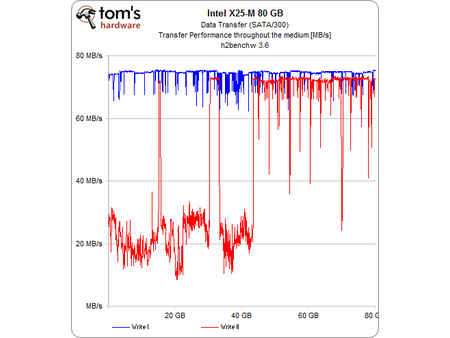Intel's X25-M Solid State Drive Reviewed
Transfer Performance and Diagram
You will find all throughput-related low level benchmarks on this page.
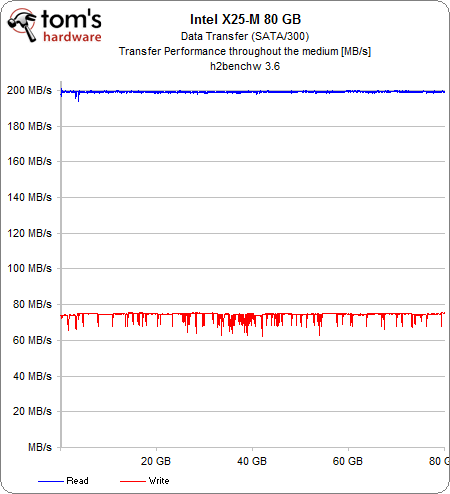
The transfer diagram is as beautiful as can be, showing a constant throughput of 200 MB/s for sequential read operations and a bit more than 70 MB/s for sequential writes. At this speed, the X25-M beats even the fastest 15,000 RPM SAS hard drives for servers in reads, but in writes it cannot compete with fast hard drives. If you intend to do hard disk recording or other applications with demand for fast sequential writes, there are faster options available.
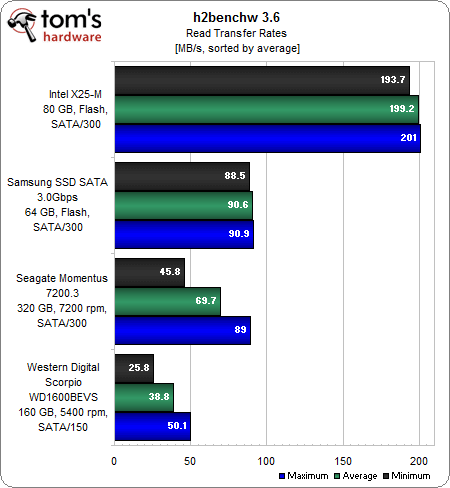
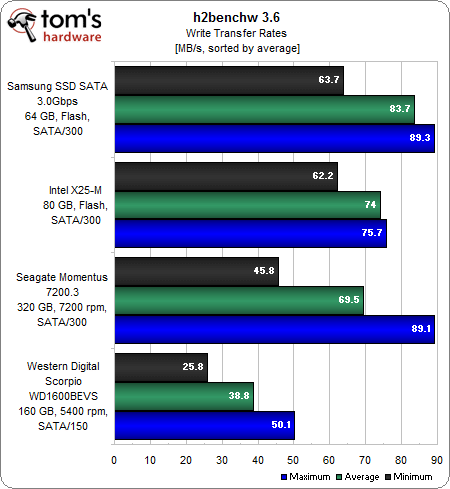
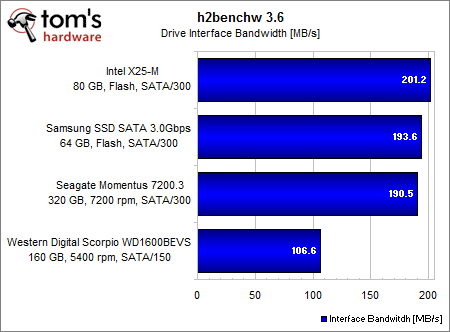
The throughput tests were performed on our storage reference test system. Please refer to the test setup page for details.
We also found that write performance of the X25-M drive can vary quite a bit once you modify the type of workload (I/O-intensive vs. sequential and changing the read/write ratio). As Intel’s flash controller constantly tries to optimize write performance and balance write access by reducing write amplification, it keeps optimizing local blocks. While blocks are physically assigned on hard drives, flash SSD controllers may modify them, which can result in varying performance for writes.
We did not notice this effect if we repeated each of the test workloads twice or several times, but it did occur if we changed from our IOmeter workloads to the sequential benchmark of h2benchw. As you can see in the chart, the write performance was heavily impacted, which is due to the controller being tuned for random operation of the prior workload. In this example, it took the device a few minutes until it changed its behavior and provided the performance level we had seen in past runs.
According to various sources, this behavior cannot be controlled if the workloads change fundamentally. This means that you might see a considerable decrease in write performance if the workload type changes. The only way to reset the drive is to use Intel’s drive erase tool which, as a side effect, will kill all the data on it.
Get Tom's Hardware's best news and in-depth reviews, straight to your inbox.
Current page: Transfer Performance and Diagram
Prev Page Test System for Low Level Benchmarks Next Page Access Time and I/O Performance